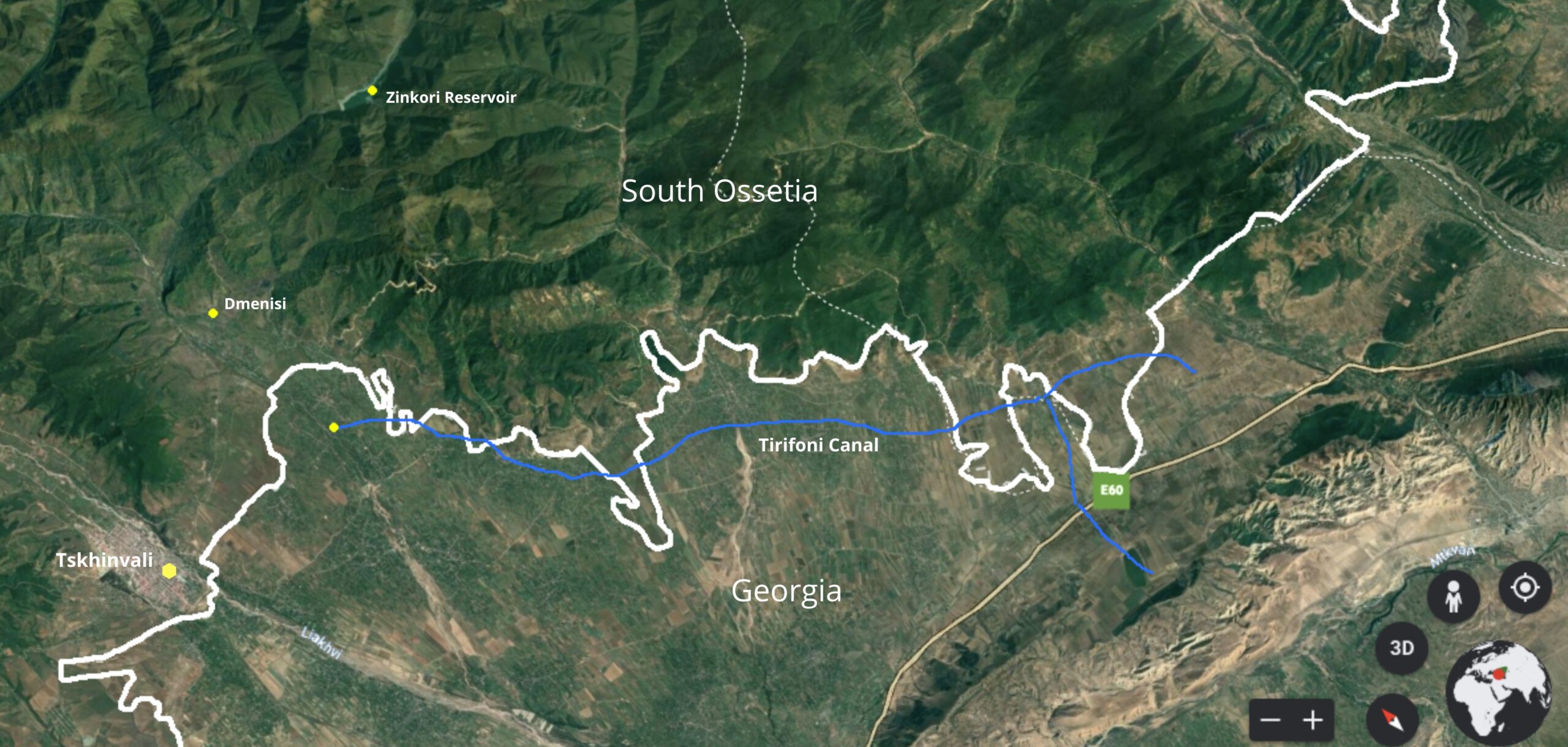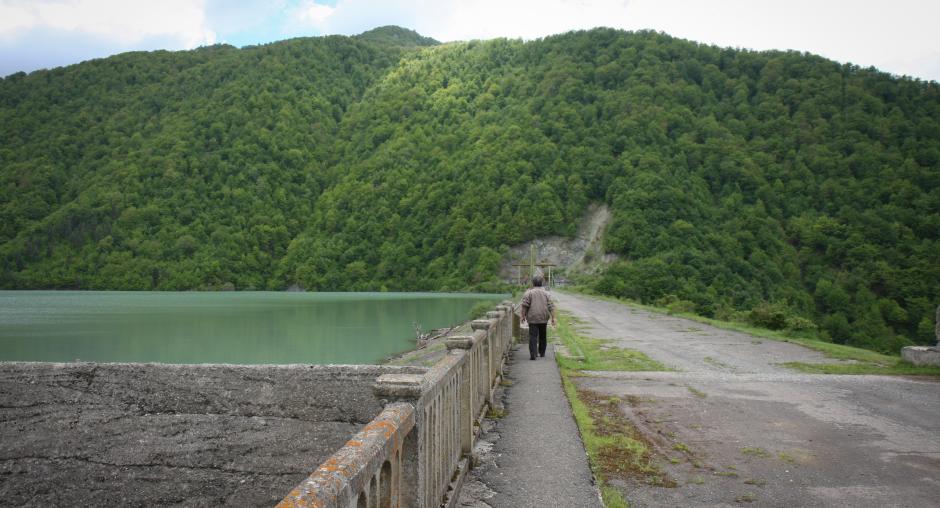Almost three months on, and Putin’s war in Ukraine has only escalated. Both sides have sustained thousands of casualties, including the tragic loss of over 7000 civilian lives.
As discussed in our first analysis, water has been used as a strategic weapon by both sides in the lead up to, and during, the conflict.
While peace seems elusive at this point, Russia and Ukraine will eventually have to form a water sharing agreement.
Why? Because without cooperation, the livelihoods of millions of Ukrainian and Russian civilians who rely on transboundary water sources could be at risk.
But can water cooperation really be achieved in times of conflict?
The answer to that question may very well lie on the other side of the Black Sea – in the nation state of Georgia.
Georgia is a small country that sits at the foot of the Caucasus mountain range, about 1000km south-east of Ukraine as the crow flies.
It was the first nation in the region to gain independence from the Soviet Union in 1991, and since then has steadily drifted West politically – forming strong ties with Western institutions and expressing its intent to join NATO.
But the region is far from homogenous. Two breakaway regions – South Ossetia and Abkhazia – both ethnically distinct and with deep ties to Russia, have been vying for independence from Georgia since the early 1990s.
Tensions came to a head in 2008 when Georgian troops entered South Ossetia and Abkhazia, legally still part of their territory, to meet severe local and Russian resistance. In a short but bloody ‘5-day war’, the might of the Russian military swiftly defeated Georgian forces.
While a peace deal was quickly brokered, hundreds of lives were lost and tensions between Georgia and the seperarist regions – and Russia and the West more broadly – only worsened.
After the war, Moscow recognised South Ossetia and Abkhazia as independent states, despite international condemnation. Since then, it has provided the region with financial support, stationed troops in its territory and offered Russian citizenship and other benefits to its residents.
At the same time, tension was rising between Georgia and South Ossetia over access and control of water resources.
The South Ossetian authorities blocked the Tirifoni waterway, leaving Georgian communities on the other side, as well as the ten South Ossetian villages located downstream, without irrigation.

The Tirifoni canal criss-crosses along the border between Georgia and South Ossetia (Credit: Google Earth/H2O Global News)
Built during soviet times, the Tirifoni Canal is indispensable to agriculture along the administrative boundary line between Georgia and South Ossetia. Thousands of farmers and their families depend on the canal for their livelihoods.
Faced with urgent water shortages, the Georgian government began building an alternative irrigation system to pump water from the river Liakhvi, within its territory, into the canal. However, persistent pump failures and aging infrastructure rendered these attempts largely unsuccessful.
To make matters worse, the South Ossetians stopped water flowing out of the Zonkari reservoir into the river Patara Liakhvi (a tributary of the Liakhvi) and from there into the canal.
More problems arose when control systems at the Zonkari reservoir jammed and it began to overfill. Experts warned that unless water was drained off, a massive flood wave would engulf the South Ossetian settlement of Dmenisi and continue onwards into Georgia.
Despite bringing in experts from Russia, the South Ossetians were unable to unblock the controls at Zonkari Reservoir.
This water conflict may sound eerily familiar. Ukraine, a post-Soviet state with deepening western allegiances, has been at odds with Russian-backed seperarist regions for years over access and control of water.
However, while the next chapter of the Ukraine-Russia water conflict has yet to be written, Georgia may provide a blueprint for future cooperation.
Politically divided, hydrologically united
Faced with an imminent threat to water security on both sides, Georgia and South Ossetia temporarily set aside their differences and began talks in 2011.
The European Union Monitoring Mission in Georgia (EUMM) helped mediate the process, and international funding was secured to source the equipment needed to get the dam sluices working again.
A hotline was established to facilitate communication between teams on both sides of the border, to ensure that local people get water – especially during the dry months of August and September.
After two years of reconstruction, the western part of the canal was back in operation. In 2014, the Minister of Regional Development and Infrastructure of Georgia, Davit Shavliashvili, said: “The irrigation system work near the border with the occupied territories is finished. Thirty-five villages, nearly 20 thousand hectares and 18 thousand families are already receiving irrigation water.”
Rehabilitation of the waterway as well as cross-border communication between South Ossetians and Goergians, continues to this day.
This co-management arrangement in the midst of extreme political tension demonstrates the transcendent importance of water.
Most of the world’s surface water bodies are transboundary, making water sharing agreements a matter of necessity rather than choice.
According to Mehmet Altingoz, PhD candidate at the University of Delaware’s Department of Geography and Spatial Sciences, transboundary water cooperation despite severe international conflict is more common than you might think.Israel-Jordon, Pakistan-India,Turkey-Armenia, Kosovo-Serbia, the list goes on.
In a conversation with H2O Global News, Altingoz, who has just submitted his PhD Dissertation on transboundary water governance in post-Soviet states, says that Russia and Ukraine used to have solid arrangements in place for the management of their shared water resources.
The Donets river system originates in Russia, flows through Ukraine, and then back into Russia, and was managed for decades through a cooperative framework, which broke down in 2014, he says.
This arrangement was led at a local level, not by politicians but by engineers.
Altingoz believes that a similar framework could be set up to manage the North Crimean Canal: “Even before Ukraine blocked the canal in 2014 it was in a bad state, with high infiltration rates and faulty pump systems.
“Whether Russia has successfully restored flow to the canal or not, which is unclear at this point, it is still in dire need of maintenance which will require cooperation on both sides.
“What is important is that these frameworks are set up to run as independently of the political situation as possible.”
So Ukraine and Russia have had positive water sharing agreements in the past and countries across the globe have formed them too.
But while Altingoz states that water cooperation is possible, he cautions against blanket statements.
“Every context is different. While I would like to say that the lessons from Georgia and South Ossetia or Israel and Jordan can be applied to the current situation in Ukraine, each case is unique.
“It can only be hoped that decision-makers in both countries will realise that transboundary water agreements benefit everyone in the long run, even if they can’t agree on anything else.”







